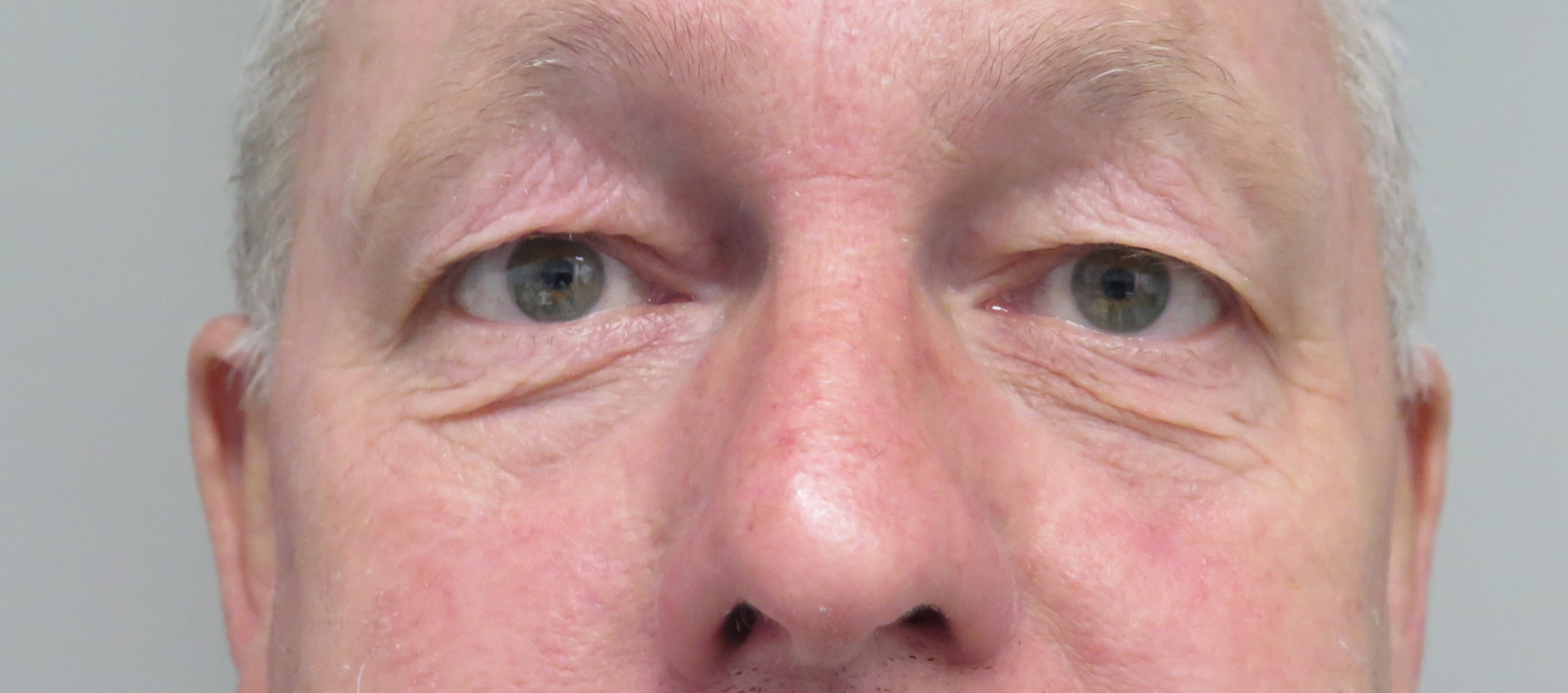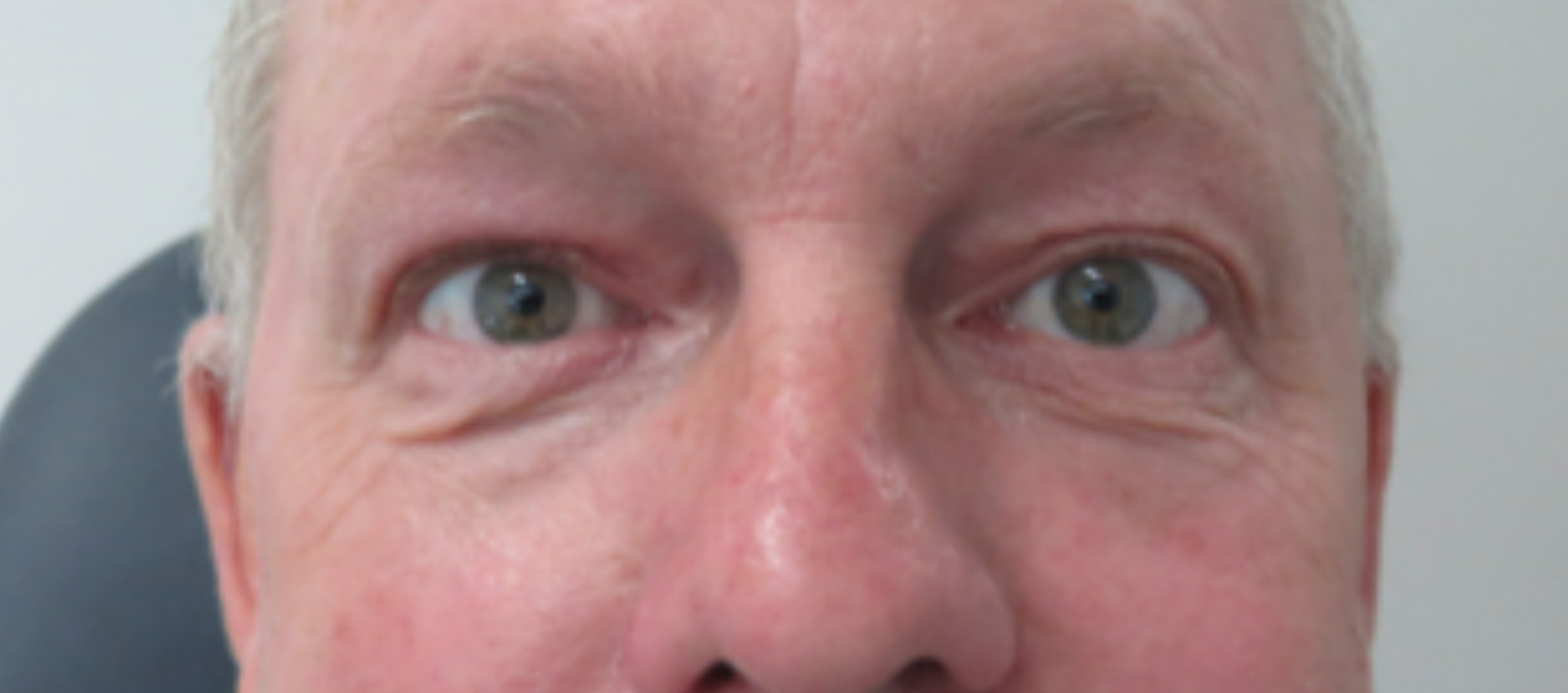Blepharoplasty
What is a Blepharoplasty?
When excess eyelid skin (dermatochalasis) affects the upper eyelids, the patients may feel that their eyelids are 'heavy' and difficult to open. Vision may also be affected.
Blepharoplasty is a procedure that involves surgically removing excess eyelid skin (dermatochalasis). Excess eyelid fat may also be removed at the same time. Dermatochalasis is usually due to ageing, although family history, smoking and sun exposure are contributing factors. Blepharoplasty can be performed on the upper eyelids, lower eyelids, or both.
When performed by qualified surgeon, potential benefits of blepharoplasty may include:
Functional: To improve upper peripheral vision by removing excess skin that droops over the eyelashes.
Aesthetic: To address signs of aging such as sagging skin and puffiness caused by fat pad prolapse.
Blepharoplasty - before oculoplastic surgery.
Blepharoplasty - 3 months after oculoplastic surgery.
What is involved in a Blepharoplasty procedure?
Upper eyelid blepharoplasty is generally carried out as a day procedure, under local anaesthesia and sedation. The procedure usually takes around one hour. After marking the eyelid with washable ink and prepping the skin with antiseptic solution, Dr Ye Chen infiltrates local anaesthetic in the upper eyelids. This stings for a few seconds and the eyelids will then feel numb for the duration of the surgery. Dr Chen will then make a surgical incision in the natural skin crease of the eyelids, thus hiding the incision. Wound healing is excellent in the eyelid region and scarring is minimal.
After the procedure, eye pads are usually applied for about an hour, and then removed. Ice packs may be applied to reduce bruising and swelling. Pain is usually mild and only simple analgesics such as paracetamol may be required, if at all.
Blepharoplasty is typically performed in a day surgery centre, under local anesthesia with sedation. Functional upper eyelid blepharoplasty may be performed in the procedure room under local anaesthesia. The specific steps vary based on whether the upper or lower lids are being addressed.
Upper Eyelid Surgery: An incision is made within the natural crease of the upper eyelid. Excess skin (and sometimes fat) is removed and prolapsed lacrimal gland may be re-positioned. Incision is then closed with fine sutures.
Lower Eyelid Surgery: The incision is usually made just below the lash line or inside the lower lid (a transconjunctival approach, which leaves no visible scar). The surgeon removes protruding fat and may remove excess skin.
What are the risks of Blepharoplasty?
As with any surgical procedure, blepharoplasty has inherent risks and potential complications. It is crucial for any individual considering this surgery to be fully aware of them.
Common Temporary Side Effects: These include swelling, bruising and dry eyes. These usually resolve within two to three weeks.
Potential Complications:
Asymmetry: Eyelids may heal differently, leading to an uneven appearance.
Scarring: While final scaring is usually minimal, scarring can be initially visible or raised.
Infection and Bleeding: There is a small risk of post-operative infection.
Weakened eyelid closure: This is an uncommon condition that is usually temporary but sometimes permanent, requiring additional treatment.
Eye Injury: Extremely rare but serious risks include injury to the eye muscles and the globe.
Unsatisfactory Aesthetic Result: The outcome may not meet the patient's expectations.
Need for Revision Surgery: In some cases, a secondary procedure may be necessary to achieve the desired result or to address complications.
At your clinic visit, Dr. Chen will discuss the procedure, its potential benefits and risks and expected recovery process with you. To ensure that you are well-prepared for surgery, Dr. Chen may sometimes ask that you have more than one clinic visit prior to the day of surgery.
Blepharoplasty - before oculoplastic surgery.
Blepharoplasty - 3 month after oculoplastic surgery.
Blepharoplasty - before oculoplastic surgery.
Blepharoplasty - 3 months after oculoplastic surgery.
DISCLAIMER: All before and after photography offer examples only, and do not constitute an implied result or any other kind of certainty for the result of surgery or a non-surgical procedure. All surgical and non-surgical outcomes are subject to the individual results for the patient and the normal variability of clinical procedure results.
Eyelid Conditions & Treatments
Watery Eyes Conditions & Treatments
Dacryocystorhinostomy Surgery (DCR)
Orbital Conditions & Treatments
Medical Disclaimer
All content and media on this Website (www.dryechen.com) is created and published online for informational purposes only. It is not intended to be a substitute for professional medical advice and should not be relied on as health or personal advice.
All photographs on this website of before and after results are examples only, and do not constitute an implied or any other kind of certainty for the result of surgery or a non-surgical procedure. All surgical and non-surgical results are subject to the individual results for the patient and the normal variability of clinical procedure results. All surgery and non-surgery procedures carry potential risks and complications which are described in detail in our surgical consent forms. All patients have given their consent for their images to be displayed on this Website.
Always seek the guidance of your doctor or other qualified health professional with any questions you may have regarding your health or a medical condition. Never disregard the advice of a medical professional, or delay in seeking it because of something you have read on this Website.
If you think you may have a medical emergency, call your doctor, go to the nearest hospital emergency department, or call the emergency services immediately. If you choose to rely on any information provided by Dr Ye Chen, you do so solely at your own risk.
External (outbound) links to other websites or educational material (e.g. pdf’s etc…) that are not explicitly created by Dr Ye Chen are followed at your own risk. Under no circumstances is Dr Ye Chen responsible for the claims of third party websites or educational providers.
If you wish to seek clarification on the above matters please don’t hesitate to get in touch with Dr Ye Chen.






